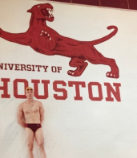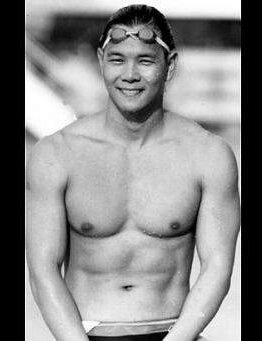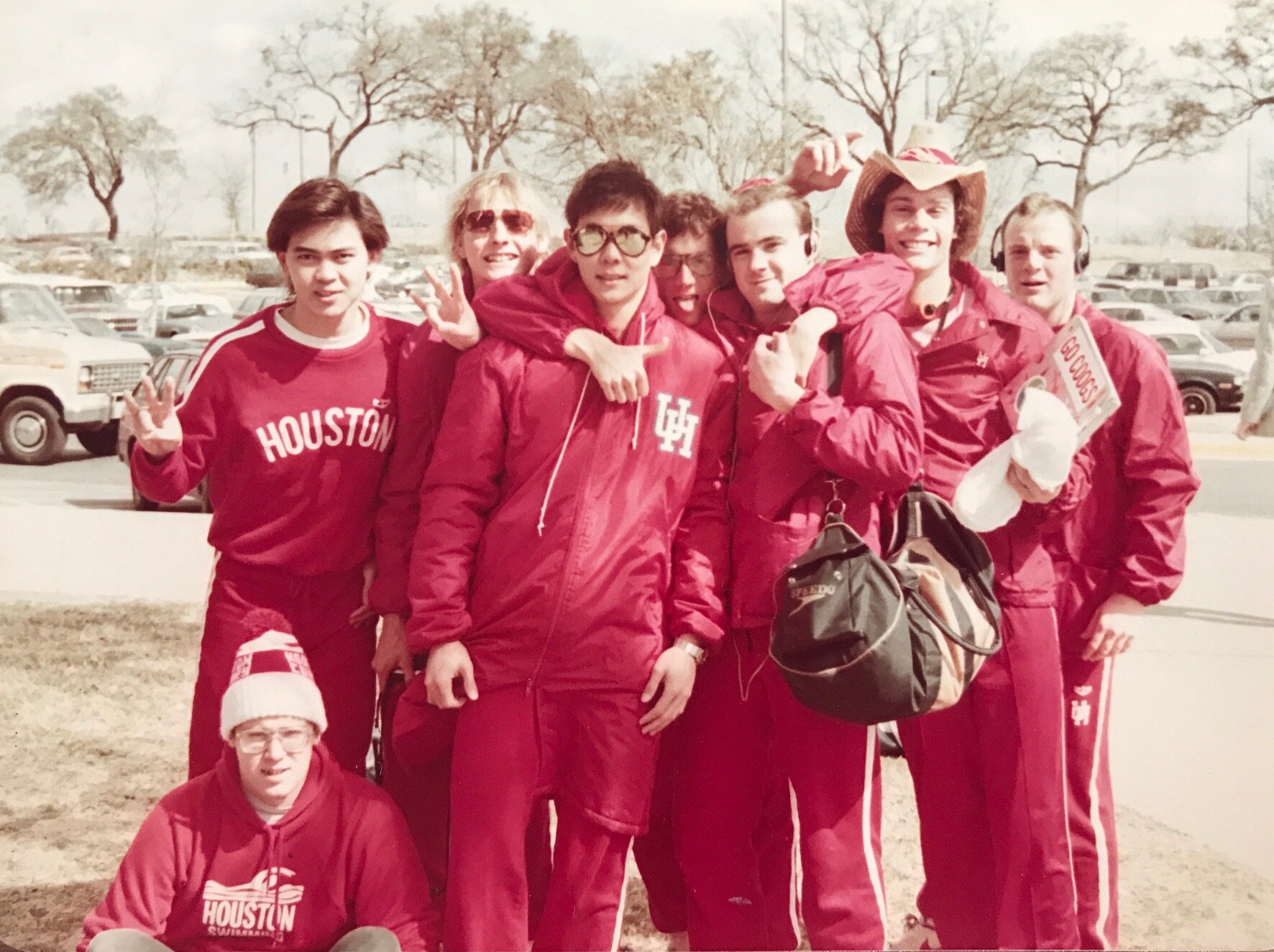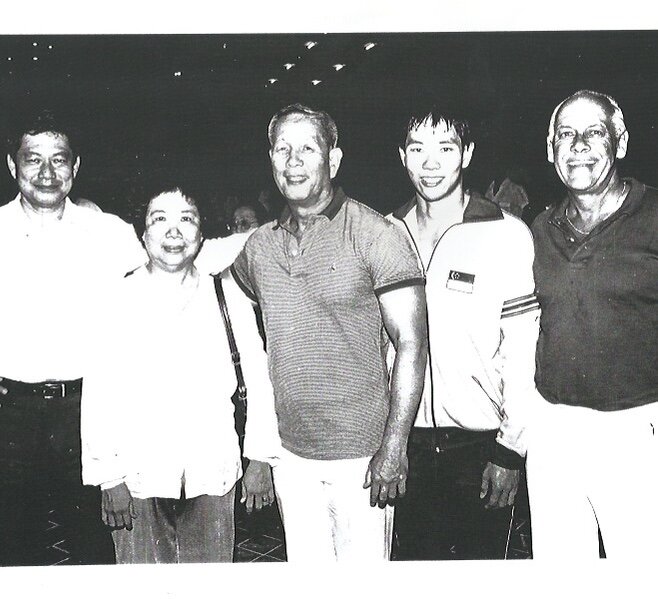Ang Peng Siong - Singapore
As a competitive swimmer, my goal is to be the best I can be.
As a coach, my goal is to help others to be the best they can be.
As a swim school owner, our goal is to help our community and citizens become confident swimmers.
“I found my ‘Ikigai’ in the sport of swimming. ‘Ikigai’, the Japanese concept of ‘a reason for being’, has been a principle I have strongly associated with for many years.
“From a learner to a competitor, and now a practitioner of mastery, my business partner and wife of 40 years, Wendy, and I strongly follow this belief. Together, we own and operate the APS swim school business and swim club in Singapore, something we established over 26 years ago.
“Swimming was always fun for me. Starting at the age of five, my dad taught me swimming. My father, Mr. Ang Teck Bee, was the pool supervisor at Farrer Park, our local pool only a three-minute walk from the family home. I grew up in a swimming family, four other siblings (me being the 4th child), with both my father and oldest brother working at the pool. Dad and mom were good swimmers, and as parents, they wanted us to be water safe and to be confident in any water environment.
“Farrer Park Swimming Complex was a second home to me. I have many good memories growing up there with my dad, family members, and friends.
“Being in the water was always a time to have fun. I would regularly go on a treasure hunt at the pool, usually finding coins and personal valuables like earrings and neck chains.
“Farrer Park was the birthplace of sports in Singapore after attaining Independence in 1965. Farrer Park precinct was a sports hub that housed many national sports organisations including the Singapore National Olympic Council. Originally it was also Singapore’s first horse racing track (1840’s). Many sporting legends came from this sporting hub across numerous sports. For swimming, two of Singapore’s famous Paralympian swimmers, Yip Pin Xiu and Theresa Goh together with Olympian Bryan Tay was part of that sporting legacy nurtured and developed at the Farrer Park. The latest talent coming off Farrer Park is Paralympian Toh Wei Soong.
“Throughout my childhood, I was constantly exposed to the routine of being at the pool and swim meets. I remember spending many hours with my younger brother and sister at the pool. I am pleased I was not forced into the sport by my parents. From time to time, I would come across kind souls, some of them were the lifeguards working under my dad’s supervision, helping me steadily develop.
“Aged seven I was enrolled into a primary school with a long-standing tradition of promoting the sport of swimming.
“Swimming days at my alma mater, Anglo Chinese School, produced many wonderful experiences and recollection. Two of my swim coaches were also teachers at the school: Mr Wee Moh Nam and Mr Lenn Wei Ling were generous, patient and excellent coaches. They were synonymous with ACS Swim Team. The school has a long list of swimming accolades from Olympians to National Champions.
“The exposure, support and patient approach to the pool and swimming took me to the top, at one time being recognised as the fastest swimmer in the world.”
Fastest Man and two-time Olympian
“In 1977 I first represented Singapore, aged just 15, at the Southeast Asian Games in Kuala Lumpur, winning silver in the 4x100m freestyle relay. From this first ‘games’ I went on to swim on the national team until 1993, including the Southeast Asian Games on seven other occasions, winning 20 gold medals at this championship during my career. Very proudly my 50m freestyle Singapore record stood the test of time, 33 years, until broken by Joseph Schooling (Singapore’s first Olympic champion, 2016) in 2015.
“In 1980, the US Olympic team, having boycotted the Moscow Olympics, were competing in an alternative meet in Hawaii, inviting other countries including Singapore to compete. Taking up this rare opportunity to swim against the world’s best was an opportunity too good to turn down. For a lot of our team, the US was too strong, however I raced well, being the only non-American to qualify for the prestigious 50-metre freestyle sprint final.
“USA coach Phill Hansel, also head coach of Swimming at the University of Houston, identified my ability from this result, offering me an opportunity to study and swim for the UH swim team. My father encouraged and insisted I accept the opportunity, and the rest is history. The years I swam on the UH team was a significant contributor to my career.
“Competing in the NCAA (National Collegiate Athletic Association) is an amazing experience. The NCAA championships is regularly described as one of the world’s fastest swim meets, certainly the prime university swimming championship meet in the world. Winning the 1983 50yards freestyle title was the pinnacle of my swimming career, helping UH win their one and only NCAA Division One men’s swimming title.
“In 1982 I was named the ‘Fastest Swimmer in the World’ for being ranked number one in the 50m Freestyle (22.69) for the year. I achieved this result in winning the US Championship. During these years, all swimming results from around the world were submitted and ranked by The Swimming World magazine, a reputed journalistic organisation, which provided the fastest 100 results from the previous calendar year for every swimming event. In 1983, in Bonn, Germany I proudly stood to receive the award for the world number one ranking. This was a special moment as until this point the sprint event were always dominated by the Americans.
“At the time, I did not feel the impact of being ranked number one in the world. I was just enjoying the opportunities to race fast with the best swimmers in the world. I suppose the time that I spent in the US kept me grounded on what I truly enjoy about swimming. My only wish was that I could have continued training in the US after I graduated from university.
“My career continued to blossom, representing Singapore in both the 1984 Los Angeles and 1988 Seoul Olympic Games. At the 1984 Los Angeles Olympics I won the ‘B’ Finals for the 100m Freestyle in a new National Record (51.09)
“The 1984 Games was a memorable event, especially for swimming, as the games of 1980 had been affected significantly by the world-wide boycott. Having all the swimming world back together was enormous. My parents and partner were in the stands when I won the 100m freestyle ‘B’ final, with the spectators sitting next to my family wondering which country this swimmer represented. Where is Singapore? Is it part of China? My proud parents explain to them that we are an independent nation located in Southeast Asia.
”I went on to race in the inaugural 50m Freestyle, my preferred event, at the 1988 Olympic Games, having been added to the swimming schedule for the first time. Unfortunately, I missed the ‘final’ by one position, recording 23.39 seconds. Prior to Seoul Olympics, after finishing 4th at the1986 FINA World Swimming Championships in Madrid, I had to head back home to do my military service. Understanding High Performance processes now, that break was a huge challenge to podium at the Olympic Games. However, the duty to keep our nation secure and safe is just as important and vital.
“These near-brushes with Olympic fame did not deter my resolve. Throughout my career I swam for Singapore from my debut, aged 15, in 1977 until I announced my retirement on 11 August 1993. This 15 to 16-year stretch was tremendously satisfying. Swimming gave me so much, and now I have the opportunity to give back through my roles at the swim school, the swim club, my roles on Singapore swim teams and committees.
“In 2009 I became the national swimming head coach, the first Singaporean to be appointed to such a high-profile position in Singapore swimming. I held this role until 2012, involving international swim meets such as the SEA Games, Asian Games, Commonwealth Games, World Championships and Olympic Games.”
Learn to Swim Centre thinking
“The idea of starting a dedicated Learn to Swim Centre came from three turning points. The first point of influence came from my Coach Phill Hansel. Phill ran the Phill Hansel Swim Academy in the city of Houston. One of the most memorable take away was the three generations of Houstonians that his swim academy had taught and made water safe. That was impactful. On the other hand, he also given the liberty to coach collegiate and international swimming. A passion that I share very much.
“The second influence came during the time I first attended the American Swim Coaches Association International Conferences and the National Swim School Association Conferences (changed to United States Swim School Association). The whole experience was enlightening especially when the industry practitioners were so helpful and forthcoming.
“The final influence was the realization that there was a need for a change in the Singapore Learn-to-Swim industry. A need to establish a professional approach to how we impart an essential aquatic survival skill to the wider community. The laissez-faire approach to teaching swimming did not reflect the importance of swim coaching and swim teaching.
“Singapore has a birth rate of 30,000 to 40,000 a year. The number of learn-to-swim service providers are insufficient to ensure that every citizen born as a Singaporean are provided that chance to learn and enjoy the journey of becoming a competent and confident swimmer. Not forgetting the ageing population who did not learn how to swim. Therefore, as a small nation, we can achieve the goal of making every Singaporean a swimmer.
“Wendy, my wife, never swam competitively, but over the years, she has grown in the aquatic industry and is a strong advocate for the sport. She shares the same passion as I do and I am blessed to have a lifetime partner who shares the joy of teaching and imparting a life-saving skill.
“Our long-term goal is to build a vibrant aquatic industry servicing the people of Singapore for many generations to come. Making every Singaporean a swimmer. All of our energies are invested into the aquatic industry. “
And your swimming now Siong?
“I continue to swim for fitness and health. Believe it or not, I am still swimming at the same pool where I learnt to swim, The Farrer Park Swimming Complex, 2 to 3 times a week. The water is like a recharging station. I feel refreshed and rejuvenated after a swim.
“My goal is to swim till the age of 100 years old.
“And I compete in Masters swim meets. Competitions are a good way for me to set goals. Right now, the reasons for attending these meets are:
1. Continued exercise routine to stay active and healthy.
2. Travel with Wendy and take a short holiday together.
3. Catching up with old friends and meeting new ones.
“I would love to participate in the World Masters on a regular basis. Something that I hope to do when I am in my 80s. My long-term goal for master’s is to carry on swimming until a ripe old age. I am inspired by a Japanese couple, aged in their 90s. A time when they travelled to Singapore for the Singapore Masters meet, they would come to the competition pool sharing one wheelchair, taking turns to push each other about. When I saw this moment, I told myself that I would like to be them.
“My wish is to have Wendy participate in one of the Japan Masters Swim Meets, however she has yet to commit!
“I predominately train on my own with two main objectives. One, improve on my level of efficiency in the water, and two, improve on my level of fitness and speed.
“As a sprinter, my favourite set is Dive 8x50m on 5:00 with swim fins. I focus on efficiency, no breathing, stroke count and good technique at 75% effort.”
And coach
“A big part of my business is the role I play as coach, president, and mentor for the Aquatic Performance Swim Club (Singapore).
“Being the President of APSC, I help steer the direction of the swim club based on the philosophy and culture I share with the legendary Australian swim coach, Forbes Carlile. Forbes had a special quote board hanging in his pool with words to the effect of, “We are not purely here to create champions, but create an environment where champions are inevitable!” We hope to establish this type of nurturing environment with the true spirit of sportsmanship.
“When the swim club was founded in 1995, one of my goals was to produce a medal winner at the Olympic Games, something that I missed out in my own journey at the 1984 and 1988 Olympic Games.
“Being a pioneer in the sport of Singapore Swimming and breaking barriers for sport in Singapore has been good to me, and for me and my family. I now take as many opportunities as I can to give back to the community.
“As a coach, I work with as many swimmers sharing my experiences helping them through difficult challenges. I will work with students of all skill levels from learn-to-swim, those with disabilities, and high performance. The joy is when you see their eyes light up when they figure out a new skill.
“I spend many hours each week researching and learning to expand my coaching knowledge, and I have made a point to attend international swim school and swim coaches conference on a regular basis.
“On a level of high-performance coaching, I was fortunate to work alongside many great coaches, including the legendary swim coach Bill Sweetenham. When I was the National Head Coach for Singapore Swimming, he was our Technical Consultant. The relationship established with him has been enlightening and enriching. Bill provided a platform and network for success in excellence. Another mentor cum physiotherapist, Roger Fitzgerald, continues to impact my life and Singapore Swimming.
“As a mentor, I work with all stakeholders (colleagues, coaches, swimmers, parents, etc) on all aspects of life and the journey taken together. We can only share our experiences so that they can avoid making the same mistakes. But sometimes, it serves good for them to learn off their own mistakes and make good of it.”
Following in dads footsteps
“Kai, our 18-year-old son, had swim lessons at our swim school and now he trains with the swim club, and has regular gym sessions with one of my former swimmers.
“Our primary goal for Kai was not to insist on being involved in swimming but one where Kai was to choose a physical activity and be willing to commit to. One to help him develop his physical growth and fitness.
“Swimming was his choice.
“He is incredibly happy with the friends he trains alongside each week, currently competing in school level and at the National Age Group competitions. Every year he progresses. When younger, he enjoyed the distance events and 200m butterfly. Vastly different from his father. Now, he is starting to enjoy the shorter distances.”
Paralympic Gold
“The journey towards Singapore’s historic gold medal win in 2008 Beijing was influenced by a few individuals. My dad worked with swimmers with a disability when I was young. His non-prejudice approach to every individual was impactful. When Coach Jan Prins from University of Hawaii introduced me to US Paralympian Gregory Burns back in 1995, our relationship grew from strength to strength. Greg was already a world-class swimmer and went on to win gold medals in 1996 Atlanta and 2000 Sydney. To this day, we remain dear friends. Greg is an established artist and motivational speaker who commutes between Singapore and California. The work with him truly gave me the insights and confidence to work with the future Para swimmers in Singapore. In 2004, I was asked by Frankie Thanapal to help with the Para swimmers in Singapore. At that time, para sports was struggling to be recognized without prejudice.
“Loaded with a new frontier, at the 2008 Bejing Olympics, Yip Pin Xiu, a swimmer I coached, became Singapore’s first Paralympic Gold & Silver medallist. This is acknowledged as a historical contribution to the Paralympic movement in Singapore. Disability Sports were at their infancy and less visible compared to the abled body sporting events. These results impacted and created a positive legacy in the community.
“I am always inspired by the para-athletes and how adaptive they are in their lives. One day when I grow old and become less mobile, I will always find inspiration from this part of my journey, working with para-athletes.”
When a visitor comes to Singapore, what places would you recommend they take a swim?
1. Marina Bay Sands – you will need to be a guest of the hotel before you can swim on their rooftop 57th floor pool. Definitely worth the experience of a lifetime.
2. OCBC Aquatic Centre – our only national aquatic centre. Indoors but not air-conditioned. A comfortable pool to do your laps.
3. Singapore Island Country Club – if you have a friend who is a member of the golf club, have them take you there for a swim at the Island Location. The 2008 US Olympic team including Michael Phelps did their staging camp there before going to Beijing.
Where are the best places you have swum and recommend to other swimmers?
1. Tokyo Sprint Masters – a fun short course swim meet. Great for the family holiday.
2. Thanyapura Sports Hotel – the hotel is in Phuket. For the health enthusiast, the place has everything that you need to take care of your body. The swimming pool is outdoor, and many national teams have trained there. A heaven for triathletes.
And any swims on your ‘bucket list’ Peng Siong?
“Open water swims in and around Southeast Asia. I would love to travel around Thailand, Philippines, Malaysia and Indonesia to swim in some of their pristine clear ocean waters.”
Snip – bits
· Peng Siong’s father participated in the 1964 Olympics (Tokyo) in Judo
· When Peng Siong was aged 5, there was only four public swimming pools accessible in Singapore. Now there are about 27 public pools and hundreds of private pools.
· He was the first Singaporean to be offered a full athletic scholarship for a US university – 1980-1986 at the University of Houston.
· Peng Siong was named Singapore ‘Sportsman of the Year’ by the Singapore National Olympic Council in 1982, 1983 and 1984.
· Inducted into the Singapore Sports Museum Hall of Fame in 1985
· Retired from swimming in 1993.
· Founded APS Swim School at Farrer Park in 1996
· Siong was ranked fifth in a list of Singapore's 50 Greatest Athletes of the Century by The Straits Times in 1999.
· At the 2000 World Masters Swimming Championships, Siong won the 35–39 age group 50m freestyle event.
· In 2002, at the age of 40, he swam 24.64s in the 50-metres freestyle event at the World Masters in Christchurch. A short 2 seconds off his time twenty years before.
· Helped establish Hope for Swim in 2020.
Connect with Peng Siong
Email: apsswim@me.com
Web: APS swim school
Instagram: @apsc.sg







